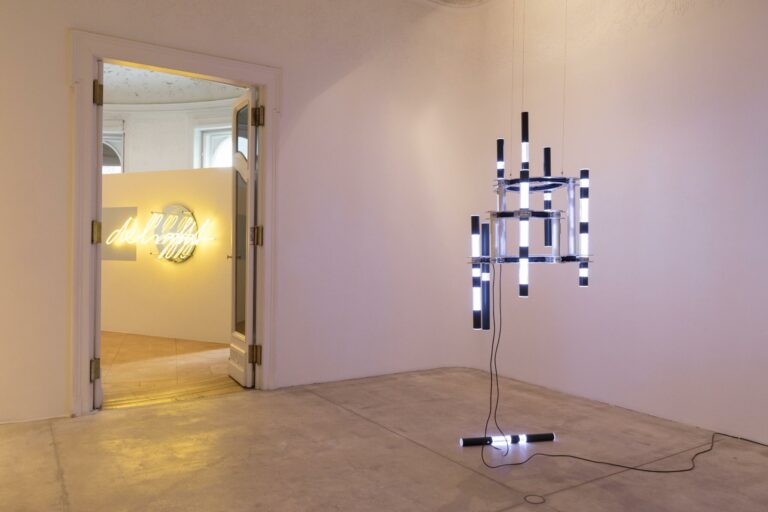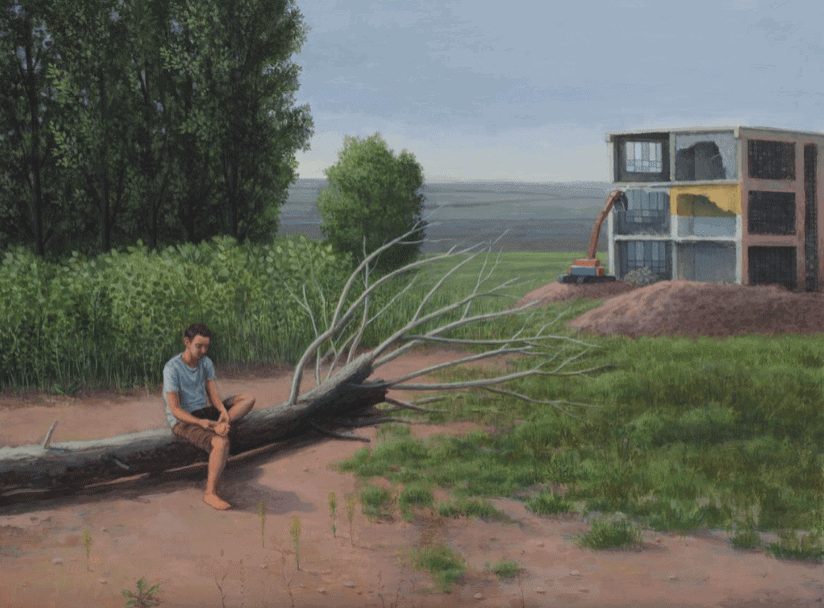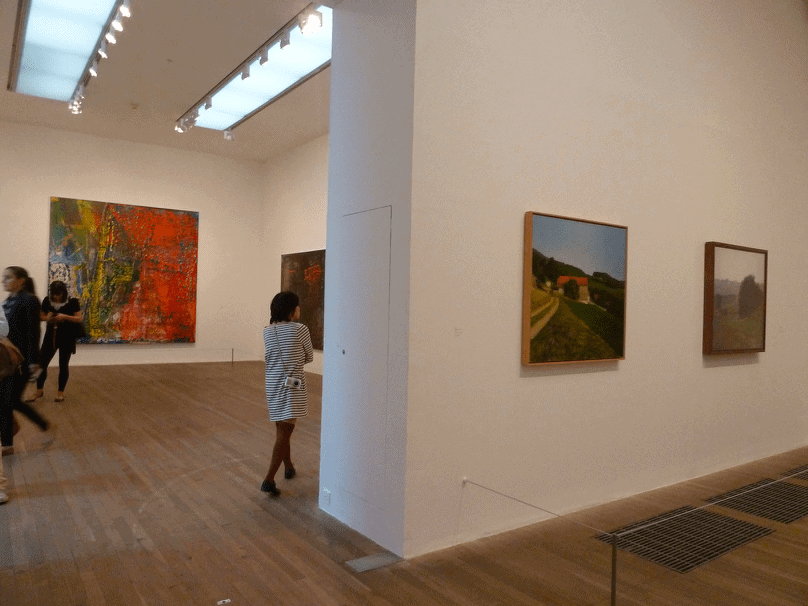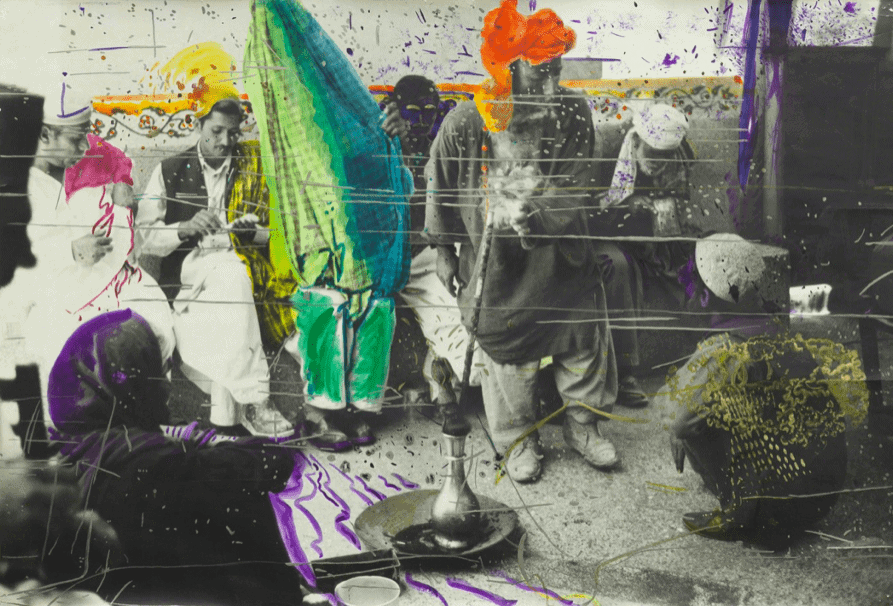
Brigitte Kowanz: Remember the Future
Galerie Krinzinger, Vienna, AT
In recent years, it is no secret that figurative painting has become increasingly visible. However, one must be aware of possible pitfalls and misconceptions concerning contemporary figurative painting.
Contemporary figurative painting can be described as painting being produced in the 21st century—or arguably during the last few decades of the previous century—implementing a representational visual language depicting forms, figures, or images, in general, emanating from the physical world or reality.
Thus, contemporary figurative painting consists of paintings that are not pure abstraction and are being made from roughly 1970 to today. Often, one would tend to describe contemporary figurative painting as ‘contemporary realism’. However, this terminology implies not only the representational aspect of a painting, but also its subject matter depicting reality as it is.
For instance, a painting of an angel can not be described as contemporary realism as it is not reality the painter is depicting. Hereby, contemporary figurative painting is more accurate and should be used to describe the use of figuration. However, when an artist such as Serban Savu depicts a scene of post-communist life in Romania, illustrating the raw reality and life of the contemporary Romanian, both terms ‘contemporary figurative painting’ and ‘contemporary realism’ are applicable (see image below).

Throughout the 20th century, particularly during the post-war era, representational painting – and painting in general – had been pushed off its plinth. After the explosion of -isms during Modernism, postmodern art movements such as Conceptual Art, Land Art, Arte Povera, Fluxus, Minimal Art, Happenings, Performance Art, Environmental Art, and so on, continuously rewrote the definition of art, radically and ingeniously. These developments in art left us wondering if there still was a place for painting, let alone for figurative oil painting – think of the iconic article by Douglas Crimp, The End of Painting, in 1981[1] in the context of the broader postmodern discourse in arts and literature.
From an art historiographical point of view, these groundbreaking developments throughout the post-war era seem to have driven painting to the periphery of the art scene. When analyzing written art history concerning art since World War II, the debates are predominantly concerned with discussing and canonizing these new forms of art and arguably losing sight of painting.[2] But what happened with the painters?
From a retrospective point of view, one can still affirm the manifestation of figurative painting in the highest tiers of the art world, ascertaining that (representational) painting hasn’t gone anywhere. Think of the Golden Lion award during the Venice Biennale in 201 3 for Maria Lassnig’s (1919-2014) captivating self-portraits, or leading galleries such as Victoria Miro or Zeno X Gallery, both founded in the 80s, successfully championing figurative artists since their foundation, manifesting themselves as leading figures in the art world.[3]

The museum institutes follow as well, by example, the retrospectives at the Tate of Gerhard Richter (b. 1932) in 2011 [see image above] or Richard Hamilton (1922-2011) in 2014. Or the show Re: Painted in 2014 in S.M.A.K. Ghent, including the works of Michaël Borremans (b. 1963), Marlene Dumas, and Luc Tuymans (b. 1958).[4]
The same case is valid concerning the auction houses. Think of the dazzling and record-breaking sales of Untitled (1982) by Jean-Michel Basquiat (1960-1988) in 2017 ($ 110.5 million), Three Studies of Lucian Freud (1969) by Francis Bacon (1909-1992) in 2013 ($ 142.4 million) or Portrait of an artist (Pool with two figures) (1972) by David Hockney (b. 1937) in 2018 ($ 90.3 million), breaking the auction record for an artwork by a living artist, temporarily dethroning Jeff Koons (b. 1955).
Furthermore, many publications have emerged concerning painting with the new millennium, such as Painting Today and the Vitamin P series[5] by Phaidon, one of the leading publishers of art books. So, it seems to be that figurative painting has found its way from the periphery back to the center of the art world.
Yet, all too often, I read statements as ‘the return of figuration’, ‘the rebirth of [figurative] painting’, or ‘painters go back to figuration’. However, this so-called ‘return’ implies a reactionary movement. Even more, in the first place, it means that figurative painting not only had been driven to the periphery but had been abolished and excommunicated from high art. When reflecting upon our recent art history, I must argue the opposite seems to be true.
For instance, throughout the 50s, 60s, and 70s, in the sphere of influence of Pop Art, there was, for example, Sigmar Polke (1941- 2010) [see image below] and David Hockney, who is – from a retrospective point of view – highly influential for figurative painting today.

What about the so-called Capitalist Realism in the 60s and 70s, represented again by the omnipresent Sigmar Polke, but also Martin Kippenberger (1953-1997), Neo Rauch (b. 1960), or the ubiquitous Gerhard Richter? Also, since the 1960s, there was Photorealism, among others, Chuck Close (1940-2021) or the hyperrealist paintings by Rudolf Stingel (b. 1956). In the 70s, Neo-Expressionism came about, the Neue Wilden in Germany, Figuration Libre in France, Transvanguardia in Italy, and Bad Painting in the States. Painters such as Georg Baselitz (b. 1938), Anselm Kiefer (b. 1945), Markus Lüpertz (b. 1941), Jörg Immendorf (b. 1945), Remi Blanchard (b. 1958), François Boisrond (b. 1959), Francesco Clemente (b. 1952), Enzo Cucchi (b. 1949), Paula Rego (b. 1935), Philip Guston (1913-1980), Julian Schnabel (b. 1951), David Salle (b. 1952), Eric Fischl (b. 1948), Jean-Michel Basquiat and many more seemed to reinvigorate, or rather, emphasize the public’s appetite for paint and a renewed interest for figuration in painting. Not to mention the School of London, with today’s painter’s-painters Lucian Freud (1922-2011), Francis Bacon, Frank Auerbach (b. 1931), and the aforementioned David Hockney.
A final argument for the persistent presence of figurative painting throughout the second half of the 20th century, when (figurative) painting was proclaimed to be dead or obsolete, is the presence of figurative painters in the top 100 of the most influential artists today, whom all have made their careers during the 60s, 70s and 80s up to today. As a result, we have compiled a listing article of the 20 most famous painters today, including twelve figurative painters such as Gerhard Richter, Georg Baselitz, William Kentridge (b. 1955), David Hockney, Alex Katz, Anselm Kiefer, Richard Prince (b. 1949), Albert Oehlen (b. 1953), Markus Lüpertz, Marlene Dumas, Michelangelo Pistoletto (b. 1933) and Leiko Ikemura (b. 1951).
So I think we can answer our previous question. What happened to the painters during the second half of the 20th century? They never left.
Please note: If you are an artist, read our article on How To Succeed As an Artist. Or, feel free to head over to our Services for artists, to get featured on CAI or request professional 1-on-1 advice.
As we return to the 21st century, we have one final question: Who are the most critical contemporary figurative painters of this very moment? We present an extensive and reasoned anthology of the most influential contemporary figurative painters for this issue. They have been dominant for you to discover during the first few decades of the new millennium. Enjoy!
Notes:
[1] D. Crimp, “The End of Painting.” in October 16 (1981): p. 69-86.
[2] E.g.: The chronological overview of 20th century art in the reference publication Art since 1900 illustrates a significant relapse ofimportant events since roughly 1960, concerning the traditional disciplines of visual arts, painting, sculpture and drawing. See: H. F oster, R. E. Krauss, Y.–A. Bois, B. H. D. Buchloch and D. Joselit, Art since 1900 : modernism, anti-modernism, postmodernism. New York: Thames and Hudson, 2004.
[4] Charlotte Mullins, Picturing people. (London: Thames and Hudson, 2015), p. 6.
[5] Barry Schwabsky, Vitamin P: New Perspectives in Painting. London: Phaidon, 2002; Barry Schwabsky, Vitamin P2: New Perspe

Galerie Krinzinger, Vienna, AT

Tutorial & Template